Stockholm, Sweden
 Stockholm calls itself the "Capital of Scandinavia," which was literally
true in the past. It is also known as the "Venice of the North" which is
probably more appropriate since it is made up of 14 islands connected by 57 bridges.
Stockholm calls itself the "Capital of Scandinavia," which was literally
true in the past. It is also known as the "Venice of the North" which is
probably more appropriate since it is made up of 14 islands connected by 57 bridges.
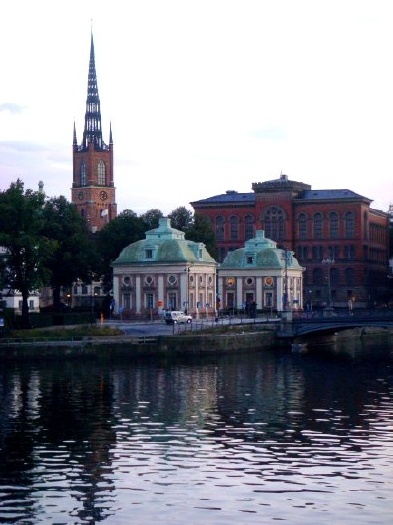 x
x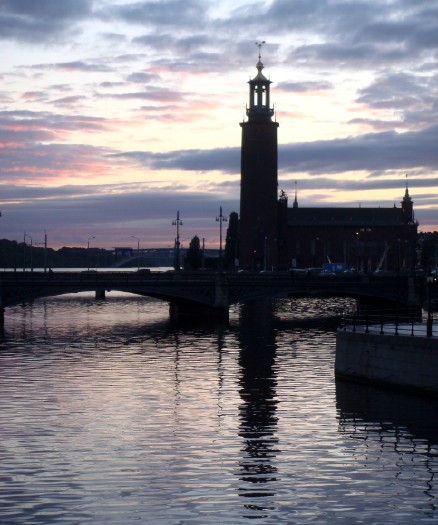
Stockholm's old city is the charming island of Gamla Stan.
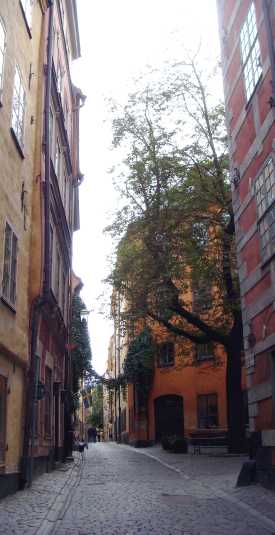 x
x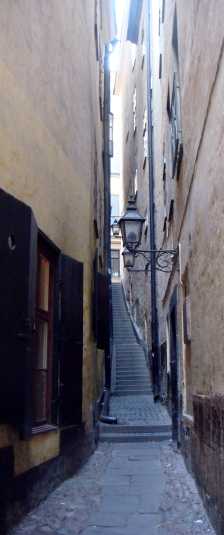 x
x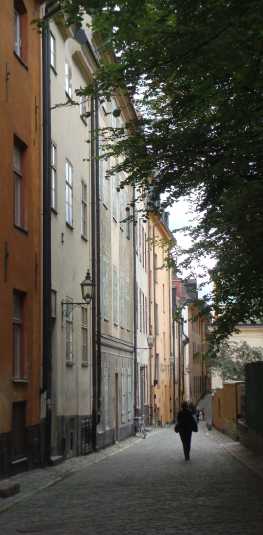
 On a quiet square in Gamla Stan is a dynamite museum, the Nobel. Five of
the prizes -- physics, chemistry, physiology, literature and peace -- were established
by Nobel in his will; economics was added more recently and is funded (in the same
amount) from another source. Jean-Paul Sartre is the only laureate who declined the
prize. Two years later, when he changed his mind and asked for the money, the Nobel
Committee said, "Sorry, it's too late."
On a quiet square in Gamla Stan is a dynamite museum, the Nobel. Five of
the prizes -- physics, chemistry, physiology, literature and peace -- were established
by Nobel in his will; economics was added more recently and is funded (in the same
amount) from another source. Jean-Paul Sartre is the only laureate who declined the
prize. Two years later, when he changed his mind and asked for the money, the Nobel
Committee said, "Sorry, it's too late."

This classy museum, housed in the old stock exchange building, opened in 2001
on the 100th anniversary of the prizes. There are portraits hanging from the ceiling of
the 775+ winners, hours of fascinating video profiles, other multimedia exhibits
and a great cafe.
 x
x
While you wait for your tasty egg and anchovy sandwich, check out the bottom
of your chair. These are the chairs that the winners sit on at the awards banquet and
they autograph them after dinner. (There was no chewing gum!)
 x
x
The walls have quotations from famous Nobel laureates; but our favorite came from Louis
Agassiz, who died before Nobel founded the prize. Too bad he didn't get the nice gold
medal, either.
 Despite all the waterfront, Stockholm's ship building record hasn't always been
successful. In 1628 The Vasa set sail on its maiden voyage on a lovely afternoon.
After 20 minutes and 1.6 kilometers (1 mile) into the harbor, it sank.
Despite all the waterfront, Stockholm's ship building record hasn't always been
successful. In 1628 The Vasa set sail on its maiden voyage on a lovely afternoon.
After 20 minutes and 1.6 kilometers (1 mile) into the harbor, it sank.
 x
x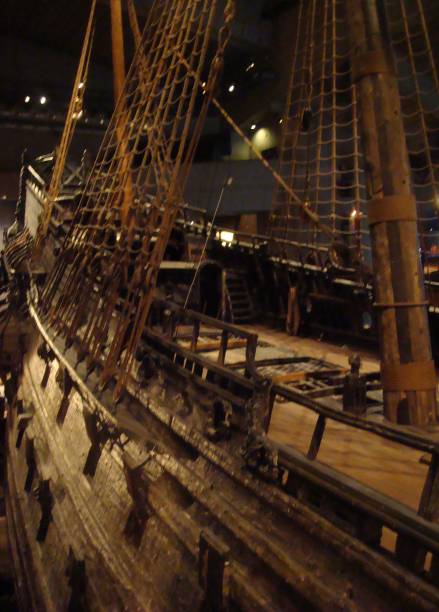
On the left is a model; on the right is the actual ship, raised
from the bottom of the ocean. When it sank, it filled with water and just dropped
straight down. For 333 years it sat on the bottom. When it was discovered, they
began planning to salvage it.

This model shows how cables were tunneled under the ship and then it was lifted to
the surface. For years they drenched the ship with glycol to replace
the water in the wood, so it wouldn't rot. They also studied the detail and repaired
the ship.
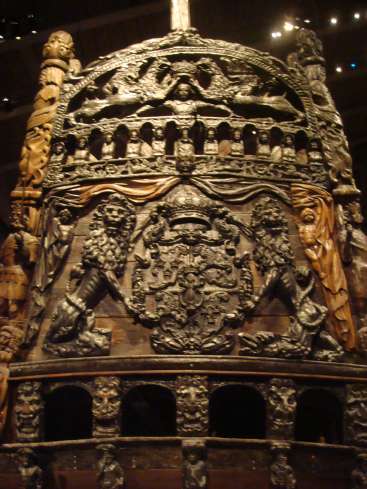 x
x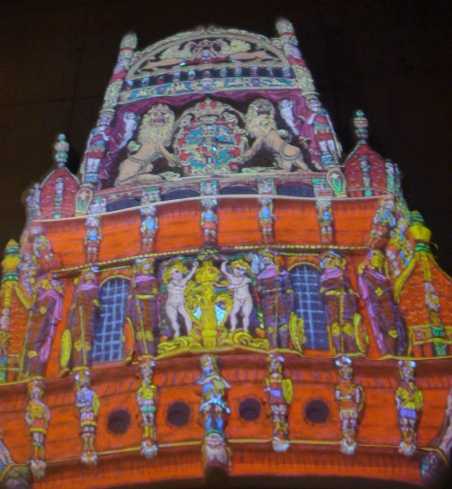
The restored aft shows the detailed carving, which was to impress the enemies. On
the right is a illustration of the original colors as determined by research. How terrified
would the enemy be of pink cupids?
So what happened? The problem was that the ship was too narrow, too top heavy and had
too little ballast. As soon as a breeze filled one of its sails, it tipped over
and water rushed in through the cannon ports. Because families were invited on the maiden
voyage, 450 people were on board, 50 of whom died.
Even in those days they had investigations
and even in those days the report did not place blame. The fault
was probably due to the King's demands and his naval commander's reluctance to tell
him the truth.

The ship was amazingly well preserved, including all of the sails, personal possessions and
this tub of butter.
 Stockholm calls itself the "Capital of Scandinavia," which was literally
true in the past. It is also known as the "Venice of the North" which is
probably more appropriate since it is made up of 14 islands connected by 57 bridges.
Stockholm calls itself the "Capital of Scandinavia," which was literally
true in the past. It is also known as the "Venice of the North" which is
probably more appropriate since it is made up of 14 islands connected by 57 bridges.
 x
x
 x
x x
x

 x
x
 x
x
 x
x

 x
x
